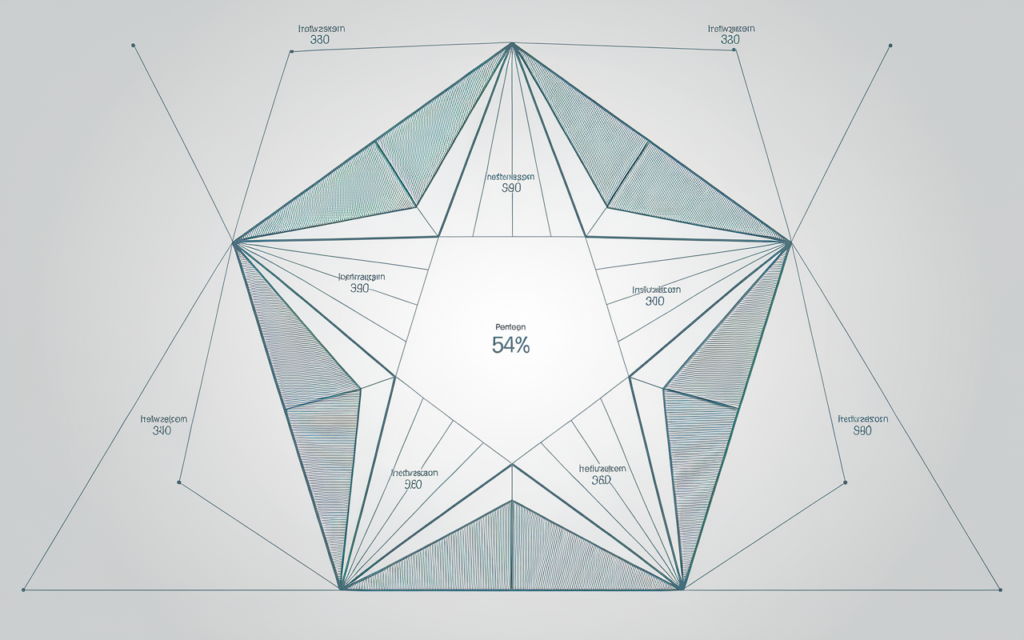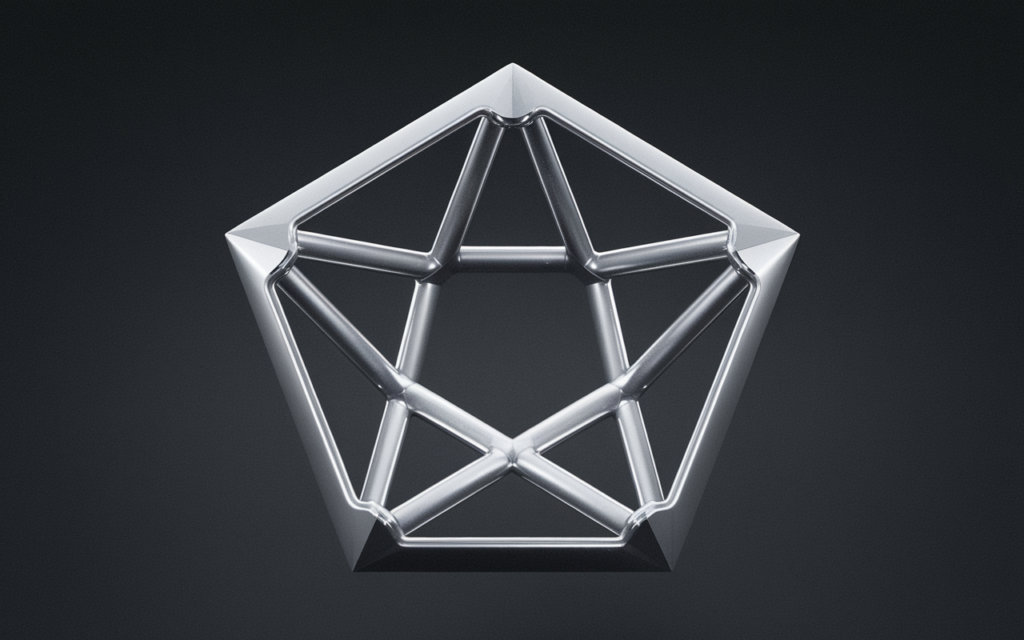Introduction: Math:rb6-qld747y= pentagon
In the world of geometry, the Pentagon holds a special place with its five sides, angles, and unique properties. A pentagon is a fundamental shape that can be found not only in mathematics but also in architecture, design, nature, and even modern art. Understanding the Pentagon and its mathematical significance is essential for students and professionals alike. This article offers a deep dive into all aspects of the Pentagon in mathematics, covering its properties, types, applications, and formulas, ensuring a thorough understanding of this geometric shape.
What is a Pentagon?
The Pentagon is a polygon with five straight sides and five inside points. It is one of the most basic shapes in Euclidean geometry and serves as a stepping stone to understanding more complex geometric figures. The word “pentagon” is derived from the Greek words penta, meaning “five,” and gonia, meaning “angle.” In a standard pentagon, the sum of the interior angles always equals 540 degrees.

Properties of a Pentagon
The properties of a pentagon revolve around its sides, angles, and vertices. These characteristics provide the foundation for understanding the behavior of pentagons in geometry.
- Five Sides and Five Angles: Every Pentagon consists of five sides and five interior angles.
- Sum of Interior Angles: The interior angles of a pentagon add up to 540 degrees, calculated using the formula (n−2)×180(n – 2) \times 180(n−2)×180, where n is the number of sides.
- Outside Points: The outside points of any pentagon aggregate to 360 degrees.
- Diagonals: A pentagon has five diagonals, which connect non-adjacent vertices within the shape.
Types of Pentagons
Pentagons can be classified into several types based on the equality of their sides and angles. Understanding these variations helps to explore the unique properties of different pentagons.
Regular Pentagon
An ordinary pentagon has every one of the five sides of equivalent length and all inside points equivalent to 108 degrees. This symmetry gives the regular Pentagon a unique aesthetic and mathematical significance. Regular pentagons appear in various areas, from architectural designs to natural forms like starfish.
Irregular Pentagon
A sporadic pentagon doesn’t have equivalent sides or points. Every sporadic Pentagon can fluctuate in shape, and the main step is that it has five sides. Irregular pentagons often appear in organic forms or complex geometric patterns.
3.3 Convex and Concave Pentagons
- Convex Pentagon: All the interior angles are less than 180 degrees, and the vertices point outward.
- Concave Pentagon: At least one interior angle is greater than 180 degrees, causing one vertex to point inward.

Formulas Related to Pentagons
Pentagons play a critical role in geometry, and several formulas revolve around their properties. These formulas are essential for calculations involving areas, perimeters, angles, and diagonals.
Area of a Regular Pentagon
The formula for the area of a regular pentagon is:
A=145(5+25)s2A = \frac{1}{4} \sqrt{5(5 + 2\sqrt{5})} s^2A=415(5+25)s2
Where s is the length of a side. This equation applies just to ordinary pentagons with equivalent sides and points.
4.2 Perimeter of a Pentagon
The perimeter of any pentagon can be found by summing the lengths of all its sides. For a regular pentagon, the formula simplifies to:
P=5×sP = 5 \times sP=5×s
location of s is the measurement of a side.
4.3 Interior Angle of a Regular Pentagon
Every inside point of a normal pentagon is estimated at 108 degrees. It can be calculated using the formula:
Interior Angle=(n−2)×180n\text{Interior Angle} = \frac{(n – 2) \times 180}{n}Interior Angle=n(n−2)×180
location of n is the number of sides (5 in this situation).
Applications of the Pentagon in Real Life
Pentagons are not just mathematical concepts; they play significant roles in various aspects of life, from architecture to nature. Understanding their applications provides insight into how mathematics interacts with the physical world.
Architecture and Design
Pentagons appear frequently in architectural designs due to their symmetry and visual appeal. Structures like the Pentagon building in Washington, D.C., and tiling patterns often use pentagonal shapes to create unique and aesthetically pleasing designs.
Nature and Biology
Nature is filled with examples of pentagons, from the shape of starfish and flower petals to the structure of certain molecules. The presence of pentagonal symmetry in natural forms often results from the efficiency of this shape in distributing forces and materials.
5.3 Art and Modern Design
In modern art, pentagons are used to create abstract shapes and patterns. Designers often incorporate pentagons into logos, mosaics, and other forms of visual art to evoke harmony and creativity.
The Pentagon Building in Geometry and Symbolism
The Pentagon building, the headquarters of the United States Department of Defense, is an iconic example of pentagonal architecture. Its unique shape serves not only as a practical design but also as a symbol of strength and unity. Understanding the mathematical properties of the Pentagon helps us appreciate the design choices behind such structures.

Pentagon and Tessellations
Decorations are designs made by rehashing shapes without holes or covers. While triangles, squares, and hexagons tessellate naturally, pentagons do not fit together perfectly in traditional tessellations. However, mathematicians have discovered specific types of pentagons that tessellate, known as convex pentagons. These tessellations are rare and exhibit fascinating patterns.
Pentagon in Advanced Mathematics and Geometry
In higher-level mathematics, pentagons are studied as part of polyhedral theory and non-Euclidean geometry. The properties of pentagons play crucial roles in constructing dodecahedrons, one of the five Platonic solids. Additionally, pentagons appear in the golden ratio, where their geometry relates to the aesthetically pleasing proportions found in art and architecture.
Solving Problems Involving Pentagons
Pentagons frequently appear in geometry problems, requiring students to apply formulas and concepts for areas, perimeters, and angles. Solving these problems provides deeper insight into the behavior of polygons and enhances mathematical skills.
Common Mistakes When Working with Pentagons
When working with pentagons, students often need to correct mistakes such as miscalculating the area or perimeter due to incorrect use of formulas. Another common mistake is confusing the properties of regular and irregular pentagons. Ensuring a clear understanding of these differences is essential to avoid errors.
Pentagon and Technology: Software Applications
Modern technology leverages the properties of pentagons in software applications related to design, architecture, and 3D modeling. Software like AutoCAD and Blender allows users to create pentagon-based designs for various projects, from floor plans to animations.
Pentagon and Educational Tools
The Pentagon is a staple of geometry education, appearing in textbooks, online tutorials, and interactive learning tools. Understanding the properties and applications of pentagons prepares students for more advanced mathematical concepts and real-world problem-solving.
Challenges in Tessellating Pentagons
While pentagons cannot traditionally tessellate, exploring the challenges of creating pentagonal tessellations offers a fascinating glimpse into the complexity of geometric patterns. Advanced research in this area continues to uncover new possibilities for using pentagons in tiling and design.
Mathematical Exploration: Pentagon and the Golden Ratio
The golden ratio, a mathematical constant often associated with beauty and proportion, appears in the geometry of regular pentagons. The ratio between the diagonal and side of a regular pentagon closely approximates the golden ratio, linking the Pentagon to art, architecture, and natural forms.
Conclusion: Mastering the Pentagon in Mathematics
The Pentagon is a versatile and essential shape in mathematics, with applications that extend far beyond geometry textbooks. From architectural designs to natural forms, the Pentagon demonstrates the beauty and functionality of geometric principles. Mastering the properties and formulas associated with pentagons equips students and professionals with valuable skills applicable in numerous fields.
Whether you’re solving geometry problems, designing creative patterns, or exploring advanced mathematical concepts, the Pentagon offers a wealth of opportunities for learning and discovery.
